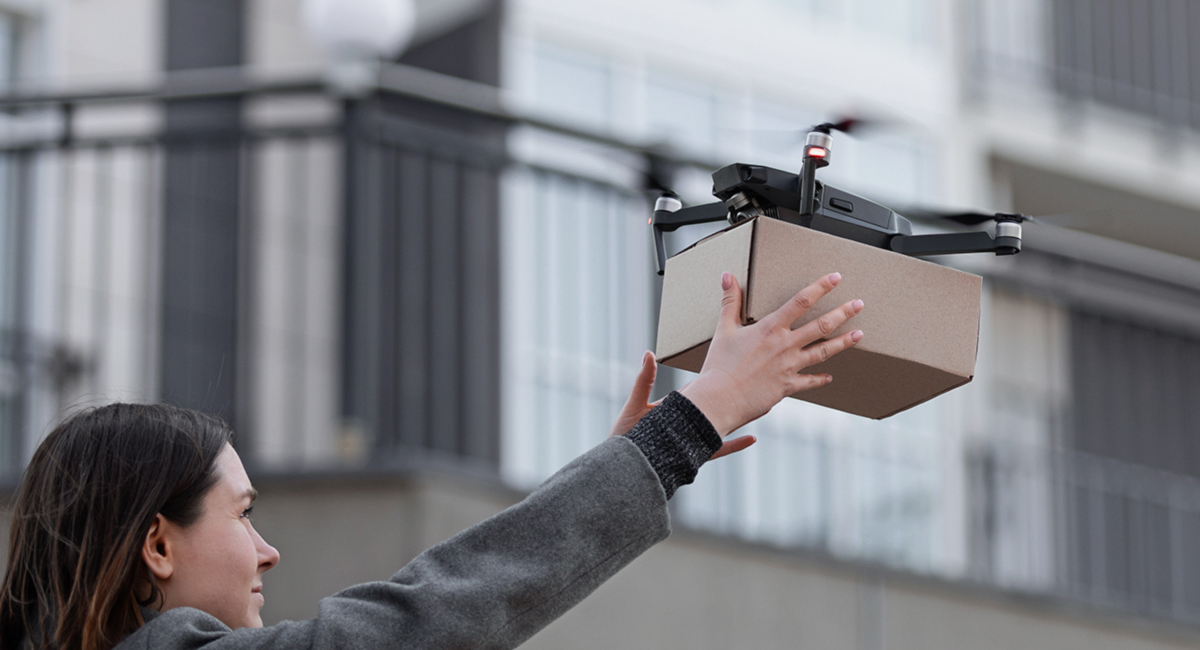Now, fast forward to her million-mile grandson, who’s most common bar conversation, as a management consultant, was how many hotel or airline points he and his colleagues had compiled that year, and strategies to gain more.
But in 2020 that conversation stopped. Connectedness is different. My physical travel radius is now like my grandmother’s and my virtual conversations are much farther reaching than I ever travelled. It’s not uncommon to have video meetings that span timezones with people from many different countries across the world. This phenomenon has become common place for many who play a part in our global economy.
It’s what I like to call “The Dichotomy of Distance.” We now work and interact globally, and look to fulfil daily needs locally.

Distance as we know it has been re-defined.
Our limited physical world is now asking us to harness the power of proximity to deliver products and services within extremely narrow windows of time and space. I limit my search to restaurants near me. Post offices near me. Gas stations near me. Hospitals near me. Home Improvement stores near me. You get it, because this is our new daily way of life. But if you are a marketer, how do you expand that bubble and capture more sales?
The conversation comes down to one word: Connectedness. The example above illustrates someone who knows what they want—they are on a mission and want to transact quickly. To capture this sale, companies need to optimize their location finding and SEO strategies to be one of the top choices presented. But there is more to connectedness than appearing in search results.

Connected customer experiences respond to individual desire.
People seek individual attention. However, based on current experiences, 76% of people surveyed by Salesforce do not believe companies treat them like individuals. When they are looking for answers digitally, customers want you to know how to service them, and how to differentiate from real-time transactional requests, when they are asking for options and when they want consultation.

Connectedness is situation sensitive.
When a person searches “gas near me,” the customer knows precisely what they want. And it is probably an urgent need fueled by a gas gauge on empty. In these instances, the customer journey must be as fast and frictionless as possible.
Other occasions are less time sensitive where a curated offering is expected. Consumers may want help understanding what their options are, and which option may be best for their situation.
These coached experiences are when the consumer acknowledges that you know them and that you have the right, or have been given the permission, to remind them (but not nag them) about their needs. “Have you taken your medicine today? Have you exercised? Your printer is running out of toner; would you like to re-order it?”

Connectedness, if done right, creates trust.
Creating personalized coached experiences in the digital realm is easier said than done. People’s online behavior provides mixed signals and they are not always seeking information for themselves. Systems may not work as quickly or as accurately as the human brain or see facial expressions. The best way to understand intent is to provide options and an atmosphere of innovation, service, convenience and trust.

Connectedness is an on-going journey.
Connectedness is not a project or road map that has a beginning and an end. Connected strategies change based on consumer behavior and desires. To search for the best ways to improve on connectedness, we have to travel outside of our usual bubble. And in this way, the points we earn developing personalized experiences for our customers will be something to really brag about.
To learn more, download Valtech’s latest whitepaper: Connectedness: Jump starting your connected experience strategy.







